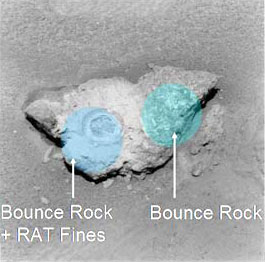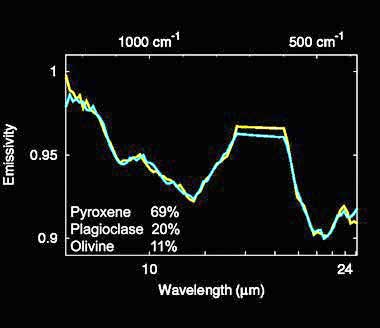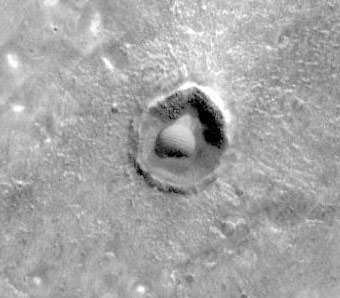|
|
|
from
Rense Website
In doing a periodic check on the Mars Rover progress, I came upon some interesting data. Its also interesting to note the text below in the NASA analysis that states:
Who would entertain such a DUMB
THOUGHT? Surely not any scientist... cough-cough. But before we get
to the savory part about rock analysis, lets look at some other
facts. You probably may already know much of this, but its still
worth a look.
It has never been proven that ANY rock could reach earth from Mars.
The odds are beyond belief, considering the red planet is more than 34 million miles from earth. To reach Mars from earth, it requires every system to work perfectly.
This requires propulsion systems, sophisticated computers and software. Could a rock from the red planet without any of this technology reach earth, just because a theoretical meteor slams into Mars?
This is like stating that two grains of sand - one
from NY city, the other found in LA, came from the same beach.
Instead of NASA re-hashing stupid-talk, they should just admit that Mars, Earth, the Moon and the other planets were PUT HERE.
Computer simulations of every possible scenario with the moon for its appearance have been done. These were done to determine HOW the moon could have become a satellite of earth using every possible natural process and event. It has an almost circular orbit and rotates so we see the same side all the time at night- and all attempts to explain it have failed.
As one scientist admitted on television, "it shouldn't be there, but
it is." In fact, it has one of the more circular orbits in the solar
system. Even more circular than many of the outer planets.
This too failed, because the moon-to-be would have slammed into the earth, or it would have just kept on passing by the earth. In space everything is weightless- but everything still has MASS. And any body in motion tends to stay in motion.
You found that out if you ever pushed a car, and didn't have someone inside to step on the brakes when you wanted to stop it. Yet Earth life needs the Moon to function, and likewise the Moon "needs" the Earth to orbit.
Therefore, these two bodies are essentially in a symbiotic state. To
me its quite difficult to grasp the entire celestial engineering
that was required for our solar system's stability.
Based on the earth's mass and wobble, science has shown from computer simulations of the earth that the moon is a stabilizer for earth's rotation, and is essential for tides.
It functions something like a flywheel, smoothing out the earth's rotation. Without tides from the moon's orbit our oceans would become like stagnant water. And at the very least, the oceans would not have the variety of life they have.
Think about how may
creatures come and go from the beach, just based on tides. Even sea
turtles go by the tide when they lay their eggs on shore. All of
this shows the beauty of Creation. (There... I said it. The "C" word,
like it or not.)
Over that time some change was expected, albeit even a very small one.
Not to mention earth's missing fossils we won't
talk about here.
Many of us suspected previously... that Mars is proving to be very much like Earth in many respects. But the curve analysis plot below the photo is such a close match to an earth rock its unreal.
The rock NASA drilled with the rover
The mineralogy of "Bounce" rock was determined by fitting spectra from a library of laboratory minerals to spectra of Bounce taken by the Mars Exploration Rover Opportunity's miniature thermal emission spectrometer.
Bounce is made-up of 69 percent pyroxene, 20 percent plagioclase, and 11 percent olivine. The pyroxene minerals are primarily calcium-rich varieties, with smaller amounts of a class of minerals called orthopyroxenes.
The composition of Bounce is significantly different from that of typical martian basalts seen over much of the surface from orbit by the Mars Global Surveyor thermal emission spectrometer. The rock's composition is, however, similar to that of meteorites thought to have come from Mars.
No detectable hematite was found in Bounce.
DOME ON MARS
Who built this structure ? Remember the size of this object is comparable to a large building, as this was taken from orbit.
|




